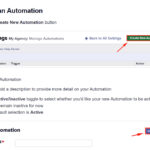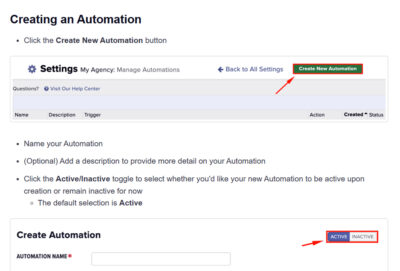When an employee gives notice, organizations often rush to post the open role, aiming to fill the vacancy as soon as possible. It’s understandable: losing an employee can disrupt productivity, decrease revenue, and create extra work for remaining staff. However, before launching an external search, taking a moment to consider your current talent pool can be a far more strategic move. Leveraging internal talent not only improves employee retention but also enhances organizational culture and efficiency.
With this article from Top Echelon Recruiting Software, here’s how you can rethink your recruitment strategy by prioritizing internal candidates.
The Importance of Internal Screening
1. Prioritizing Internal Candidates
Before rushing to hire externally, consider the many advantages of looking internally first. Here are several key reasons to start from within:
- Retention: Promoting from within is crucial for maintaining employee morale and retention. Many organizations promise growth and advancement opportunities during recruitment, but fail to deliver on these promises. This often results in employees seeking promotions outside the organization. Considering the high costs of turnover—including recruitment expenses, lost productivity, and the time required to train new hires—prioritizing internal mobility is a cost-effective strategy. Offering new roles and promotions internally keeps employees engaged, reduces turnover, and helps avoid burnout, particularly in high-stress or high-turnover roles.
- Time to Productivity: New hires typically have a steep learning curve, which can delay productivity. In contrast, internal candidates are already familiar with the company’s culture, systems, and processes, enabling them to reach peak productivity more quickly. This can be especially valuable for senior-level positions, where knowledge of organizational dynamics and culture is critical. Reducing the time-to-productivity not only saves money but also ensures continuity in key roles.
- Cultural Fit: Hiring internally provides a significant advantage in terms of cultural fit. Current employees have already demonstrated alignment with your organization’s values and behaviors, and they understand its unique culture. This familiarity helps ensure smoother transitions and better team integration, reducing the risk of a poor fit that could lead to future turnover.
Best Practices for Effective Internal Screening
To maximize the benefits of internal hiring, it’s important to establish a comprehensive internal screening process. Here are some best practices to consider:
1. Make Internal Screening a Core Component of Your Recruitment Strategy
Internal screening should be a central element of your recruitment strategy. By continuously assessing your current employees for growth and development opportunities, you can create a talent pool ready to step into critical roles as they become available. This proactive approach reduces the time and cost associated with external recruitment, while also ensuring a steady pipeline of qualified candidates for hard-to-fill positions.
2. Create Clear and Transparent Career Paths
Employees are more likely to stay with your organization if they see clear opportunities for growth. Develop transparent career paths for all roles, allowing employees to understand potential progression opportunities and the skills and experience needed to reach their career goals. In addition to vertical advancement, consider offering lateral moves that provide new skills and broaden employees’ experience. Such moves, including job rotations and cross-training opportunities, can help employees gain a broader understanding of different aspects of the company, preparing them for more diverse roles in the future.
3. Invest in Comprehensive Training and Mentorship Programs
An effective training and mentorship program is essential for nurturing internal talent. Identify the skills and competencies required for key roles within your organization, and then provide targeted training to help employees develop these skills. Pair employees with mentors who have experience in similar roles, fostering a culture of continuous learning and growth. Mentorship programs not only build skills but also strengthen relationships within the organization, which can be critical for long-term retention and engagement.
4. Utilize Advanced Technology for Talent Management
Investing in technology can significantly enhance your internal talent management efforts. Use tools such as applicant tracking systems (ATS) and human resource management systems (HRMS) to monitor employees’ skills, performance, education, and career aspirations. Platforms like Top Echelon Software offer advanced search capabilities, enabling you to quickly identify internal candidates with the desired qualifications. By integrating these tools with performance reviews and individual development plans, you can ensure a clear succession path for each employee, benefiting both managers and staff.
Building an Effective Internal Hiring Process
To create a fair and effective internal hiring process, it’s crucial to establish clear guidelines and maintain consistency. Here’s how to set up a robust internal recruitment framework:
- Simultaneous Posting of Vacancies: Consider posting vacancies both internally and externally at the same time. Alternatively, you could prioritize internal candidates by posting positions internally for a set period before opening the search to external candidates. This approach ensures that internal employees have the first opportunity to apply for new roles.
- Unified Application Process: To avoid biases and ensure fairness, use a consistent application process for both internal and external candidates. Encourage internal applicants to update their resumes and highlight their relevant experiences, just as external candidates would. This process allows internal candidates to showcase their full potential and provides managers with a complete view of each applicant’s qualifications.
- Structured Internal Interviews: Treat internal interviews with the same rigor as external ones, focusing on the competencies required for the role. While you may need to spend less time evaluating cultural fit, given that internal candidates are already familiar with the organization, it’s still important to assess their suitability for the new team or department. Consider feedback from their current managers, along with their performance reviews, to make a well-rounded decision.
Developing a Successful Succession Plan
No matter the size of your organization, succession planning is critical to maintaining business continuity and ensuring long-term success. Here are some essential elements to consider when developing a comprehensive succession plan:
1. Align Succession Planning with Organizational Strategy
Succession planning should be an integral part of your overall business strategy. Identify key roles within the organization and determine which employees are best suited to fill them in the future. Regularly review and update succession plans to reflect changes in business objectives, market conditions, and employee development.
2. Offer Ongoing Development Opportunities
To prepare employees for future leadership roles, it is vital to provide continuous learning and development opportunities. Encourage employees to take on challenging projects, attend workshops, pursue certifications, or engage in leadership training. This investment in development demonstrates a commitment to their growth, increasing their engagement and loyalty to the organization.
3. Foster Cross-Functional Collaboration
Encourage cross-functional collaboration by promoting projects that involve multiple departments or areas of expertise. This approach helps employees gain a holistic understanding of the organization, develop new skills, and build relationships across teams. Cross-functional experience is especially valuable for leadership roles that require a comprehensive view of the entire organization.
4. Track and Measure Progress
Regularly assess the effectiveness of your succession planning by tracking key performance indicators (KPIs) such as retention rates, time-to-fill critical roles, and employee engagement scores. Use this data to identify areas for improvement and adjust your strategy as needed to ensure it continues to align with your organization’s goals.
Leveraging Technology in Succession Planning
Technology is a powerful ally in the succession planning process, offering tools to track and manage employee development and readiness for future roles. Here are some ways technology can enhance your succession planning efforts:
1. Talent Management Systems
Utilize talent management systems to identify high-potential employees, monitor their development, and align their growth plans with organizational objectives. These systems provide a centralized platform for managing performance reviews, career development plans, and succession plans.
2. Data Analytics
Data analytics can provide insights into employee performance, skills gaps, and training needs, allowing you to make informed decisions about promotions and development opportunities. This data-driven approach ensures that your succession planning efforts are both strategic and effective.
3. Virtual Learning and Development Platforms
Leverage virtual training platforms to provide employees with access to a wide range of learning resources, including online courses, webinars, and virtual coaching sessions. These platforms offer a flexible and cost-effective way to develop new skills and stay current with industry trends.
Balancing Internal and External Hiring
While prioritizing internal hiring offers numerous benefits, there are times when external hiring is necessary to bring in new skills, perspectives, or experiences. A balanced approach to hiring—leveraging both internal and external talent—can help create a diverse and dynamic workforce.
1. Identify When External Hiring is Necessary
There are situations where external hiring is the most strategic choice. For example, when filling roles that require specialized expertise or experience that is not available internally, or when seeking to infuse new ideas and perspectives into the organization, external candidates may be the best option.
2. Utilize External Assessment Tools
When hiring externally, use a variety of assessment tools, such as behavioral interviews, cognitive ability tests, and personality assessments, to evaluate candidates’ fit for the role and organization. These tools can help reduce turnover by ensuring that new hires are both qualified and aligned with your company culture.
A Holistic Approach to Talent Management
Focusing on your internal talent pool is a strategic way to improve retention, reduce recruiting costs, and maintain productivity. By developing a robust internal hiring process, investing in employee development, and leveraging technology, you create a workforce that is adaptable and ready to meet future challenges. At the same time, recognizing the need for external hires ensures you remain competitive by bringing in fresh skills and perspectives.
To enhance your recruitment and succession planning efforts, consider partnering with Top Echelon Software. Our comprehensive platform offers advanced tools for talent management, helping you identify, develop, and retain top talent within your organization. Contact us today and schedule a live demo to learn more about how we can support your strategic recruitment goals and create a seamless candidate experience.








